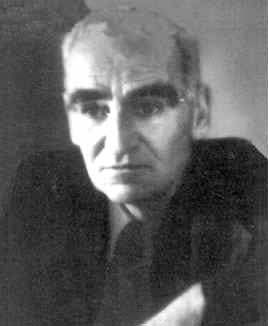Residence United States Name Eric Bell Fields Mathematics | Nationality British Role Mathematician Awards Bocher Memorial Prize | |
 | ||
Born February 7, 1883Peterhead, Scotland, UK ( 1883-02-07 ) Institutions University of WashingtonCalifornia Institute of Technology Alma mater Stanford UniversityColumbia University (Ph.D.) Doctoral advisor Frank Nelson ColeCassius Keyser Doctoral students Howard Percy RobertsonMorgan WardZhou Peiyuan Notable awards Bocher Memorial Prize (1924) Books Men of Mathematics, Mathematics - queen and servant of, The development of mathe, The last problem, The magic of numbers | ||
Eric temple bell
Eric Temple Bell (February 7, 1883 – December 21, 1960) was a Scottish-born mathematician and science fiction writer who lived in the United States for most of his life. He published non-fiction using his given name and fiction as John Taine.
Contents
- Eric temple bell
- Biography
- Fiction and poetry
- Writing about mathematics
- Non fiction books
- Scholarly papers
- Novels
- Poetry
- Quotes
- References
Biography
Bell was born in Aberdeen, Scotland, but his father, a factor, relocated to San Jose, California in 1884, when he was fifteen months old. The family returned to Bedford, England after his father's death, on January 4, 1896. Bell returned to the United States by way of Montreal in 1902.
Bell was educated at Bedford Modern School, where his teacher Edward Mann Langley inspired him to continue the study of mathematics, Stanford University, the University of Washington, and Columbia University (where he was a student of Cassius Jackson Keyser). He was part of the faculty first at the University of Washington and later at the California Institute of Technology.
He researched number theory; see in particular Bell series. He attempted—not altogether successfully—to make the traditional umbral calculus (understood at that time to be the same thing as the "symbolic method" of Blissard) logically rigorous. He also did much work using generating functions, treated as formal power series, without concern for convergence. He is the eponym of the Bell polynomials and the Bell numbers of combinatorics (but not the "bell curve"). In 1924 he was awarded the Bocher Memorial Prize for his work in mathematical analysis. He died in 1960 in Watsonville, California.
Fiction and poetry
During the early 1920s, Bell wrote several long poems. He also wrote several science fiction novels, which independently invented some of the earliest devices and ideas of science fiction. Only the novel The Purple Sapphire was published at the time, using the pseudonym John Taine; this was before Hugo Gernsback and the genre publication of science fiction. His novels were published later, both in book form and serialized in magazines. Basil Davenport, writing in The New York Times, described Taine as "one of the first real scientists to write science-fiction [who] did much to bring it out of the interplanetary cops-and-robbers stage." But he concluded that "[Taine] is sadly lacking as a novelist, in style and especially in characterization."
Writing about mathematics
Bell wrote a book of biographical essays titled Men of Mathematics, (one chapter of which was the first popular account of the 19th century woman mathematician Sofia Kovalevskaya) and which is still in print. The book inspired notable mathematicians including Julia Robinson, John Forbes Nash, Jr., and Andrew Wiles to begin a career as a mathematician. However, historians of mathematics have disputed the accuracy of much of Bell's history. In fact, Bell does not distinguish carefully between anecdote and history. He has been much criticized for romanticizing Evariste Galois. For example: "[E. T.] Bell's account [of Galois's life], by far the most famous, is also the most fictitious."
His treatment of Georg Cantor, which reduced Cantor's relationships with his father and with Leopold Kronecker to stereotypes, has been criticized even more severely.
Bell's later book, Development of Mathematics has been less famous, but Constance Reid finds it has fewer weaknesses. The Last Problem is a hybrid, between a social history and a history of mathematics.
Non-fiction books
Scholarly papers
Novels
Poetry
Quotes
"Time makes fools of us all "
